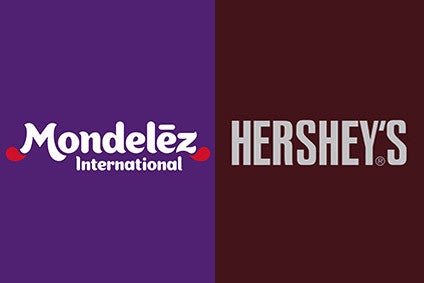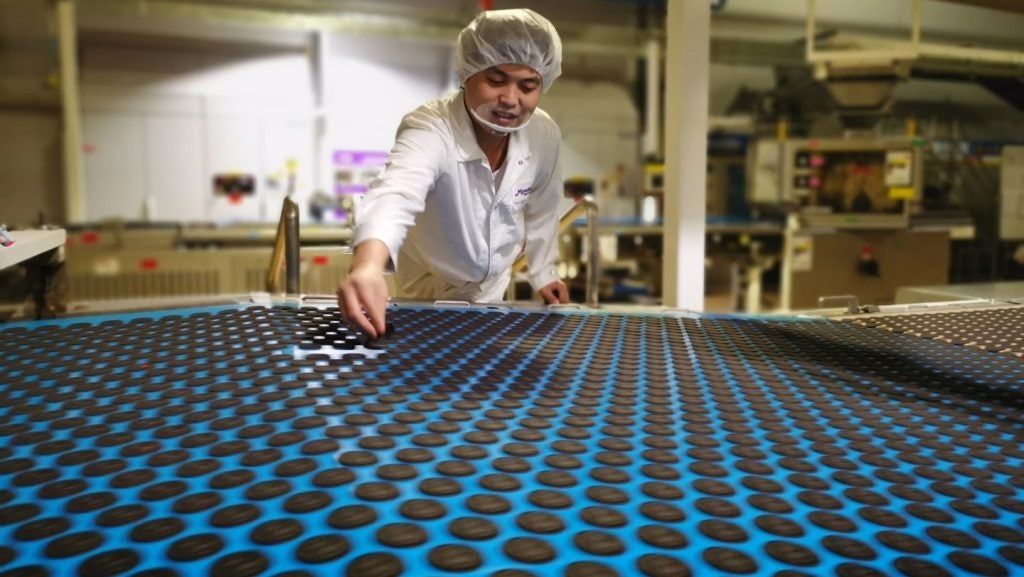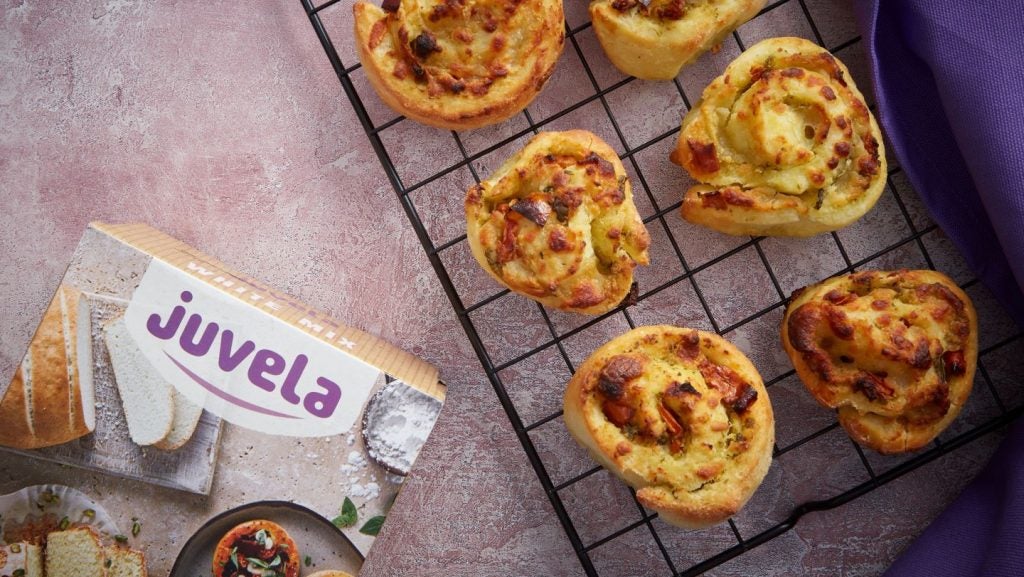
Hershey turned down a takeover approach from Mondelez International last week (30 June). At US$107 per share, the cash-and-shares offer valued the Reese’s Pieces maker at approximately US$22.83bn.
Hershey insisted the offer did not warrant further discussions with Mondelez. “The company’s board of directors, after receiving input from the company’s management and its outside financial and legal advisors, carefully evaluated the indication of interest. Following this review, the board of directors of the company unanimously rejected the indication of interest and determined that it provided no basis for further discussion between Mondelez and the company.”
Nevertheless, pundits and investors continue to be drawn to the prospect that Mondelez could push a tie-up through.
In a food sector where competitive forces are turning up the pressure for consolidation, Mondelez obviously thought a combination with Hershey would offer some sweet relief. There is strategic rationale behind Mondelez’s interest in Hershey.
Here is just-food’s summary of what you need to know about the deal.
See Also:
1. Would create a chocolate titan
The confectionery sector remains highly fragmented. According to Euromonitor International, global chocolate sales are worth US$100bn. The top six companies have 60% global share and the top three confectioners have only a 38% combined share.
How well do you really know your competitors?
Access the most comprehensive Company Profiles on the market, powered by GlobalData. Save hours of research. Gain competitive edge.

Thank you!
Your download email will arrive shortly
Not ready to buy yet? Download a free sample
We are confident about the unique quality of our Company Profiles. However, we want you to make the most beneficial decision for your business, so we offer a free sample that you can download by submitting the below form
By GlobalDataThe combination of Hershey and Mondelez would result in the formation of the world’s largest chocolate group. Its stable of blockbuster brands would include the likes of Hershey, Cadbury, Reese’s and Milka. It would account for 22.8% of global chocolate sales, ahead of Mars with 15.2% and Nestle with 11.5%.
2. Complementary geography
The geographic fit between the two groups is appealing. Around 75% of Mondelez’s revenue is generated outside North America, with almost two-thirds of sales originating from Europe. With around 40% of sales exposed to the euro/sterling – and increasing regional volatility as highlighted by the UK referendum – ramping up sales in US dollars will provide some stability.
In contrast, approximately 90% of Hershey sales are generated in North America. The company has attempted to grow overseas, but the results have been somewhat mixed and Hershey has hit speed bumps in markets such as China.
Mondelez’s global distribution network should prove a boon to Hershey brands, were a deal to go ahead. The company already has plenty of brand equity globally and Mondelez’s global reach would capitalise on this.
In the US, any potential gains for Cadbury are likely to be more modest. Nevertheless, Susquehanna International Group analyst Pablo Zuanic suggests, there are gains to be had. “We think gradually the US Hershey platform would help Cadbury. In fact, given the heavy weight of bagged chocolate at Hershey (versus bar form) in the US, we think the business would benefit from some of the iconic “bar” brands in the Cadbury portfolio.”
Another advantage to minimal geographical overlap is the deal is unlikely to be hampered by competition hurdles.
3. The Hershey Trust is a barrier
The Hershey Trust has long been viewed as a barrier to any takeover of Hershey. Established by the chocolate maker’s founder, Milton Hershey, the Trust controls over 80% of Hershey voting rights. A deal cannot go ahead without the Trust’s backing.
Mondelez appears to have already made a number of concessions in a bid to woo the Trust. According to The Wall Street Journal, Mondelez has made promises around jobs; suggested it would move its corporate headquarters to Hershey, Pennsylvania; and offered for the combined group to adopt the Hershey name. Hershey’s strongly-worded rejection of the offer would suggest that this has not sweetened the deal.
As recently as 2007, the Hershey Trust reiterated its intention to retain a “controlling” interest in the company and the Trust has blocked previous takeover attempts that would compromise this. In 2002 it rebuffed a move by Wrigley, in 2007 it prevented merger talks with Cadbury (now owned by Mondelez) and in 2010 the Trust prevented the chocolate group from bidding for Cadbury when the UK company was facing a hostile takeover bid from the then Kraft Foods – which then spun off into Mondelez International.
The terms of Mondelez’s proposed transaction, understood to be a 50-50 cash and stock deal, would see the Trust retain a stake in the larger business but lose its position as a controlling shareholder.
But – while the Trust has the votes – itis not as strong as it once was. The Trust, set up as a children’s charity, is under investigation by the Pennsylvania Attorney General’s office over how long its directors retain their positions. The regulator has called for the resignation of three of its longest-serving directors. This uncertainty has prompted some pundits to suggest Mondelez could find a chink in the Trust’s defensive armour.
Nevertheless, Morgan Stanley’s Matthew Grainger writes: “In our view, these remain powerful hurdles to any potential transaction, and – although we would not view them as absolute obstacles – the board’s decision today and recommitment to its strategic plan suggest a transaction is still relatively unlikely despite factors such as Mondelez’s willingness to offer “non-monetary” concessions, Hershey’s recent operational challenges, and recent disruptions at the Trust.”
4. Mondelez has a history of hostile takeovers
Mondelez’s management led by chairman and CEO Irene Rosenfeld does have a history of successfully pushing through hostile mergers. In 2010, Rosenfeld, then the head of Kraft Foods, won through in a bitter takeover battle to wrestle control of Cadbury.
However, perhaps this takeover battle has acted as a warning for the Hershey Trust as much as anything else. In the UK, the then-Kraft had insisted it was its “sincere belief” it would keep Cadbury’s production sites in the UK open. One week after completing the takeover, it closed the Cadbury factory in Somerdale at the cost of 1,000 jobs. After telling the UK parliament that production of inconic items like Cadbury Dairy Milk would remain in the UK, the company then proceeded to ship out manufacturing to Poland where costs are lower.
The Hershey Trust’s fiduciary duty is to represent the interests of its charitable affiliates, such as the school it funds – not the financial gain of Hershey shareholders. It has strong ties to the local community and – with some reason given Mondelez’s current focus on stripping costs from the business – it could view the prospect of Mondelez taking control with some cynicism.
5. Other potential suitors?
This raises the possibility that another bid – one that the Hershey Trust views as more amenable to its interests – could emerge.
“We think Hershey could be attractive to other suitors also,” Zuanic notes. The analyst suggests Kellogg may see good brand overlap and be tempted by the desire to expand further into snacks, while Nestle may want to increase its exposure to US chocolate and take back control of its KitKat trademark in the market. PepsiCo and Kraft Heinz are “more of a longshot”, Zuanic adds.






